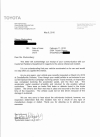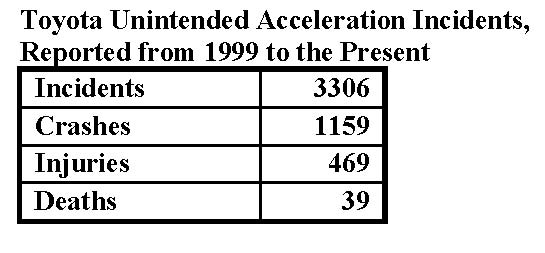Yesterday, the House Energy and Commerce Committee’s Oversight and Investigations Sub-committee rendered its verdict after conducting interviews with key personnel from Toyota and Exponent and reviewing some 100,000 Toyota- and NHTSA-produced documents about the much-heralded “exhaustive” efforts to determine if there was a connection between Sudden Unintended Acceleration and Toyota’s electronic throttle control system: Toyota lied.
While the committee and sub-committee chairs, Reps. Henry Waxman (D-CA) and Bart Stupak (D-MI) respectively, did not state things quite so baldly, they came darned close in their opening statements:

